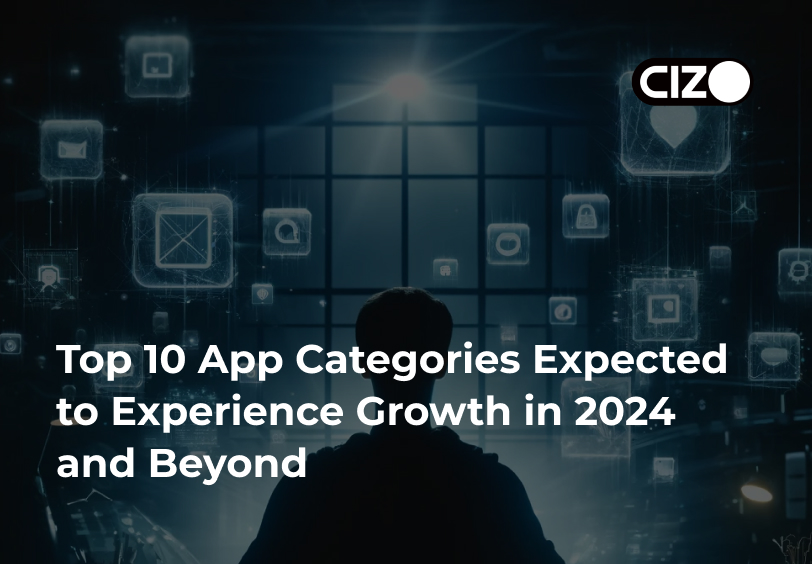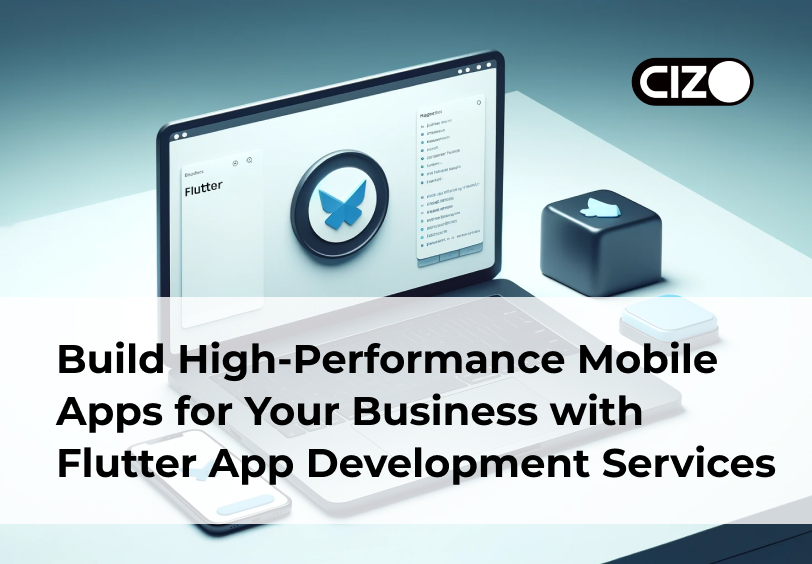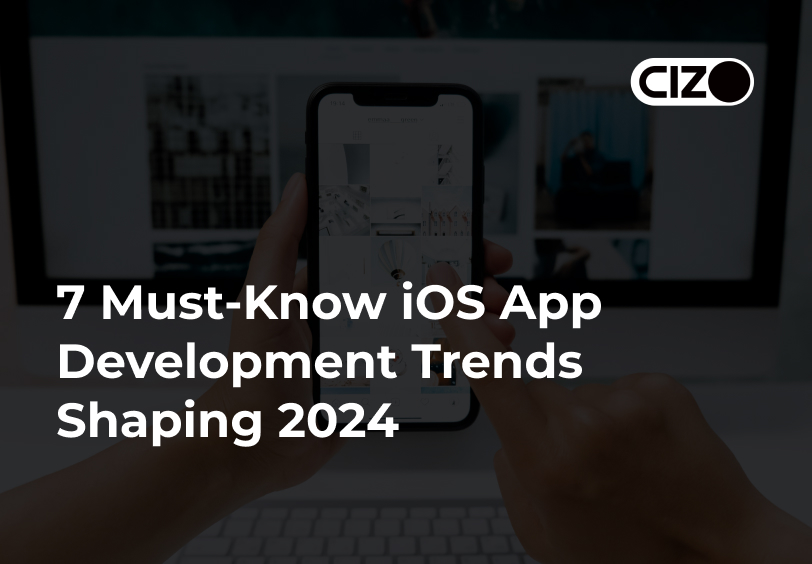 14th January 2024
14th January 2024
Build & Launch Winning Products: Your Guide to Full-Cycle Product Development
Dreaming of a game-changing product but lost on how to bring it to life? A full-cycle product development process can be your roadmap to success. But be warned, it’s no walk in the park.
Research shows a staggering 75-95% of products fail due to poor market fit, design flaws, or execution blunders. To avoid this fate, follow the 7 crucial stages of product development.
This blog dives deep into each stage, demystifying the journey from spark of inspiration to market-ready product. We’ll equip you with the knowledge and confidence to turn your dream into reality.
We only collect information for business use as detailed in our Privacy Policy
Ready to unleash your product’s potential? Buckle up and get ready to navigate the exciting world of product development!
What is Full Cycle Product Development?
Full cycle product development makes that dream a reality. It’s the all-in-one toolkit for crafting market-dominant solutions, ensuring every step fuels success.

- Ideation: Where seeds of possibility are sown and nurtured.
- Market Research: Charting the terrain, understanding the landscape where your product will flourish.
- Design & Prototyping: Bringing your vision to life, tangible and testable.
- Development: Building the engine that powers your product’s magic.
- Testing: Polishing the rough edges, ensuring a seamless experience.
- Deployment: Setting sail into the open market, ready to meet its eager audience.
- Maintenance: A never-ending journey of refinement, tending to your product’s growth and evolution.
Full cycle product development isn’t just about a product’s creation; it’s about adaptation, innovation, and thriving in the real world. It’s the key to unlocking quality, usability, and the ultimate reward: satisfied customers and a flourishing business.
Full Cycle Product Development vs. Product Development: A Deeper Look
At first glance, “full cycle product development” and “product development” might seem interchangeable. Both guide a product from conception to launch, right? But upon closer inspection, their scopes diverge significantly.
Product development acts like a skilled craftsperson, meticulously shaping a product’s form and function. It’s all about the creation itself – brainstorming, prototyping, designing, and fine-tuning. Imagine it as the dedicated hands building the product, focusing on the nuts and bolts of its existence.
Full cycle product development, however, takes on the role of a conductor, overseeing the entire orchestra of a product’s life. It encompasses not only the construction phase, but also the crucial pre-launch steps like market research and competitive analysis. It then extends beyond launch, ensuring the product reaches its audience, performs well, and adapts to changing needs over time. Think of it as the mastermind behind the scenes, orchestrating everything from conception to post-launch success.
In essence, product development is the engine that builds the product, while full cycle product development is the conductor guiding its journey from birth to beyond. So, the next time you hear these terms, remember – one is the builder, the other the conductor, and both play vital roles in bringing a product to life and keeping it thriving.
Phases of Full Cycle Product Development
The 7 Phases of full cycle product development offer a clear roadmap for bringing your idea to life. From ideation and research to prototyping, development, testing, launch, and ongoing maintenance, each stage plays a crucial role in crafting a product that meets user needs and thrives in the market.
A. Generating Ideas and Conceptualizing Concepts
The birth of any product starts with a spark – an idea. This is the stage of idea generation, where your creative fire gets stoked. Think of it as a brainstorming playground, where you delve into the problems people face and dream up solutions they might not even know they need.
To guide your exploration, dive into market trends and understand what’s making waves. What are people craving? What could simplify their lives? With this knowledge in hand, start shaping your rough ideas. Imagine your product’s core features, it’s highlights, it’s potential to improve lives. Picture it like crafting a story in your mind before putting pen to paper.
Remember, no idea is too wild in this stage. Embrace all possibilities, even the seemingly wacky ones. But don’t forget your target audience – those who will truly benefit from your invention. Delve into their preferences, their daily struggles, their needs. Ask yourself:
- Who will my product help the most?
- What does my targeted audience like or dislikes?
- How can my product seamlessly integrate into their lives and make them better?
Once you have answers, start crafting your product around them. Discuss your ideas, seek feedback, and refine your vision. When the dust settles and the best concept emerges, you’ll have the foundation for a product with real potential.
B. Dive into Discovery: Research & Planning
Before diving into development, embark on a deep dive into market research. This exploratory mission will uncover the landscape of your industry, illuminate current trends, and reveal the desires of your target audience. Analyse the data you gather to identify both popular products and untapped potential for innovation. Look for opportunities and challenges hiding within these insights.
Next, turn your attention to existing products that resemble your envisioned creation. Scrutinise the strengths and weaknesses of your competitors, searching for ways to set your product apart. Gather data on user needs and pain points associated with similar offerings. Don’t be afraid to go straight to the source: conduct surveys and interviews to understand what kind of product or software people actually crave.
Once your concept takes shape, consider its technical limitations, the resources it demands, and the costs involved in bringing it to life. Craft a timeline, define key milestones, and set clear development goals. This roadmap will guide your journey from idea to reality.
By laying a foundation of thorough research and meticulous planning, you’ll be well-equipped to navigate the exciting (and sometimes unpredictable) path of product development.
C. Prototype & Design
This stage is where your vision takes shape. You’ll refine your concept, add those crucial details, and decide how your product will interact with the world. Here’s where your digital prototype comes in – a tangible representation of your ideas and concepts. It’s like a sneak peek into how your product might function, revealing potential flaws and areas for improvement before you dive into full-fledged development.
Once the prototype is built, it’s time to gather feedback from your future users. Usability testing is your secret weapon to identify any potential roadblocks, understand user preferences, and uncover hidden design flaws. Listen to their insights, iterate on your prototype, and watch it evolve into a truly user-centric product.
Now, before you hit the launch button, it’s time to build your blueprint. This includes everything from detailed designs and technical drawings to development requirements and product specifications. Don’t forget to map out your budget, covering design, development, testing, launch, and even future maintenance. With a clear roadmap and a well-tested prototype, you’re ready to bring your vision to life!
D. Product Development: Building Your Dream
Once the product concept is polished, developers bring it to life with detailed blueprints or schematics. This meticulous planning ensures each component seamlessly integrates and functions flawlessly within the final product.
Before diving headfirst into full development, it’s crucial to create a Minimum Viable Product (MVP) with core features. This stripped-down version allows you to test the market fit and gather user feedback. Think of it as a delicious appetizer before the main course.
Armed with product analytics, you can identify areas for improvement and refine your offering to satisfy the market and modern user preferences. This “market-fit” version is the full-fledged masterpiece you can confidently launch into the world.
Naturally, this stage involves a symphony of code changes and collaboration. Version control systems like Git are the conductors, keeping track of every edit and allowing developers to work on different sections simultaneously, ensuring a harmonious development process.
But before the grand unveiling, thorough testing and quality assurance are essential. These rigorous standards ensure your product is not just functional, but polished and ready to delight your users.
E. Quality Assurance Testing
The quality testing stage takes center stage in ensuring your product shines. It’s like putting your software through a rigorous boot camp, assessing its functionality, performance, user-friendliness, and overall experience. The mission? To guarantee it not only meets every requirement but surpasses expectations.
Think of it as building a fortress against potential glitches. You craft tests to scrutinise every aspect, from core functionality to seamless performance, intuitive usability, and robust compatibility. Security, accessibility, and user acceptance are meticulously examined, ensuring your product caters to diverse needs and adheres to regulations.
These tests act as your early warning system, uncovering issues before they derail your launch. By identifying and fixing them during development, you avoid post-release nightmares and deliver a product that’s polished, reliable, and ready to conquer the market.
Essentially, quality testing transforms your software from a rough draft into a masterpiece, ready to impress users and dominate the competition.
F. The Product Deployment Phase
The product deployment stage marks the culmination of your development efforts, where your creation finally reaches its intended audience. This crucial phase encompasses the meticulous planning, thorough preparation, and flawless execution required to seamlessly deliver the digital product into the hands of its end users.
Imagine meticulously packing your product’s components – its essential files and resources – into a convenient, ready-to-use package. This might be a familiar installer, a single executable file, or even a modern container image. Think of it as creating a beautifully wrapped gift, ready to be presented to its eager recipient.
Before unveiling your masterpiece to the world, a crucial validation step awaits. The product enters the “staging environment,” a dedicated testing ground where developers can meticulously examine its functionality, performance, and overall user experience. This is like inviting trusted friends and family to preview your gift before the grand celebration. Their feedback allows you to fine-tune and polish your creation, ensuring it truly resonates with your target audience.
Once thoroughly confirmed ready for prime time, the moment of truth arrives. The product finds its home on its designated platforms, whether it’s an app store, a website, or a cloud marketplace. Users can now discover, download, and install it, eagerly anticipating the exciting possibilities it unlocks. This is the grand unveiling, the moment your hard work finally bears fruit and empowers users to accomplish their goals.
Remember, product deployment is not just about technical steps; it’s about bridging the gap between your development efforts and the real-world impact you aim to create. By embracing a meticulous and user-centric approach, you can ensure a smooth launch and pave the way for a successful product journey.
G. Maintenance and Upgradation
Preventative Care:
- Regular Maintenance: Schedule regular scans to identify and squash bugs or glitches before they hatch.
- Performance: Optimize your product for increased data or user load to ensure smooth sailing even in heavy traffic.
- Security Check: Apply security patches and updates promptly to stay ahead of potential threats and vulnerabilities.
- Backup: Regularly backup user data to safeguard against unexpected crashes or emergencies.
Timely Upgradation:
Update your product to keep pace with evolving markets and user needs. This means adding new features, improving existing ones, and ensuring compatibility with new operating systems, browsers, and hardware. By embracing change, you ensure your product remains relevant and valuable in the long run.
Advantages of Full Cycle Product Development:
Clarity and Focus:
Streamlined product creation: Full cycle development guides you through a clear vision and strategy, aligning your product with business goals and market needs. It helps identify key objectives and user problems your product tackles, setting a course for long-term success.
Market Fit and Relevance:
Build for your audience: Through market analysis and continuous user feedback, your product stays relevant, competitive, and high-performing. This reduces the risk of wasted resources and ensures your product adapts to user expectations and market shifts.
Resource Optimization:
Make the most of what you have: Efficient resource allocation minimizes waste and unnecessary spending. You’ll prioritize tasks, optimize budgets, assess risks, and allocate manpower effectively throughout the product’s lifecycle.
Quality You Can Trust:
Deliver excellence: Rigorous testing and quality control at every stage lead to premium products. This fosters trust with users, reduces defects, and creates a superior user experience.
Dedicated Customer Support:
Always there for you: Full cycle development provides comprehensive support before, during, and after product usage. Users get various support channels, self-help resources, and prompt issue resolution, leading to enhanced satisfaction.
Continuous Improvement:
Never stop learning: The cycle embraces ongoing learning and adaptation based on user feedback, market trends, and emerging technologies. You’ll constantly identify areas to improve user experience, usability, sales, marketing, and product lifecycle management, keeping your product agile and responsive.
Adaptability in a Changing World:
Flexible and resilient: Your product will evolve alongside user demands, market competition, and unforeseen challenges. New ideas, technologies, and methodologies are embraced, ensuring your vision stays on track while navigating a dynamic digital landscape. Informed decision-making and seizing opportunities contribute to long-term success.
Sustainability and Compliance:
Build responsibly: Adherence to rules and regulations reduces negative impacts and potential liabilities. You’ll anticipate risks, address concerns, and meet user expectations. This contributes to product viability, minimizes legal complications, and aligns your product with ethical and legal standards.
Stand Out from the Crowd:
Competitive edge: A well-defined process sets your product apart and gives you a strategic advantage. Emphasize innovation, quality, cost-efficiency, unique features, and exceptional customer service to stand out from the competition.
Unlock Market Potential:
Deep understanding of your market and target audience helps you identify new opportunities. The competitive advantage this process offers attracts and retains customers, leading to increased market share and profitability.
Full cycle product development offers a strategic approach that delivers better product quality, adaptability, and long-term success. Through thorough planning, risk management, and a user-centric focus, you create a product that meets user needs, complies with regulations, and thrives in the market.
Choosing the Right Team for Full-Cycle Product Development: A Guide
Navigating the product development lifecycle can be a complex journey, fraught with technical hurdles at every turn. To ensure your project’s success, selecting the right development partner is crucial. Here are key considerations to guide your decision:
- Industry Expertise and Proven Track Record:
Prioritize companies with experience in your specific industry and product type.
Scrutinize their portfolio, focusing on similar projects they’ve successfully delivered.
Reach out to past clients for firsthand insights into their experience.
- Resource Adequacy and Skilled Workforce:
Avoid potential bottlenecks by choosing a team with sufficient resources, including skilled personnel and necessary tools.
Ask about their team structure and ensure they have the expertise to tackle your project’s specific needs.
- Meticulous Planning and Realistic Milestones:
Rushing through development phases is a recipe for disaster. Prioritize a partner who emphasizes thorough planning and realistic milestones.
Open communication and clear expectations are key to a smooth development process.
- Rigorous Testing and Quality Assurance:
Poorly designed products can lead to performance issues and downtime. Choose a team committed to thorough testing and quality assurance throughout the development cycle.
Understand their project management methodologies and development strategies, ensuring they align with your vision.
- Secure Development Practices for Data Protection:
Data security is paramount, especially when dealing with sensitive information. Verify the organization’s quality assurance and testing process for data protection.
Ensure they follow established security protocols and authentication methods.
6. Invest in Experts, Navigate Smoothly:
By prioritizing expertise, resources, and a well-structured approach, you can navigate the product development journey with confidence. Choosing the right team, equipped with the skills and experience to address technical challenges, will ensure your product’s success, mitigating risks and ensuring a smooth launch.
Partner With Cizo Technology to Get Qualitative Full Cycle Product Development Service
Cizo Technology: Your one-stop shop for seamless full-cycle product development. Our expert team navigates complex challenges with grace, anticipating risks and consistently delivering high-impact products.
Agile methodologies and industry best practices are our weapons of choice. We ensure efficient development, top-notch quality, and rock-solid risk management. We pivot strategies with agility, adapting to changing project requirements, technology landscapes, and market dynamics.
We’re the masters of efficiency and adaptability. We hit your project goals and deadlines head-on while staying laser-focused on user-centric design, regulatory compliance, and continuous improvement.
HAVE A LOOK AT OUR OTHER ARTICLES
A PROJECT WITH CIZO?











 hello@cizotech.com
hello@cizotech.com +91 79907 01039
+91 79907 01039 


